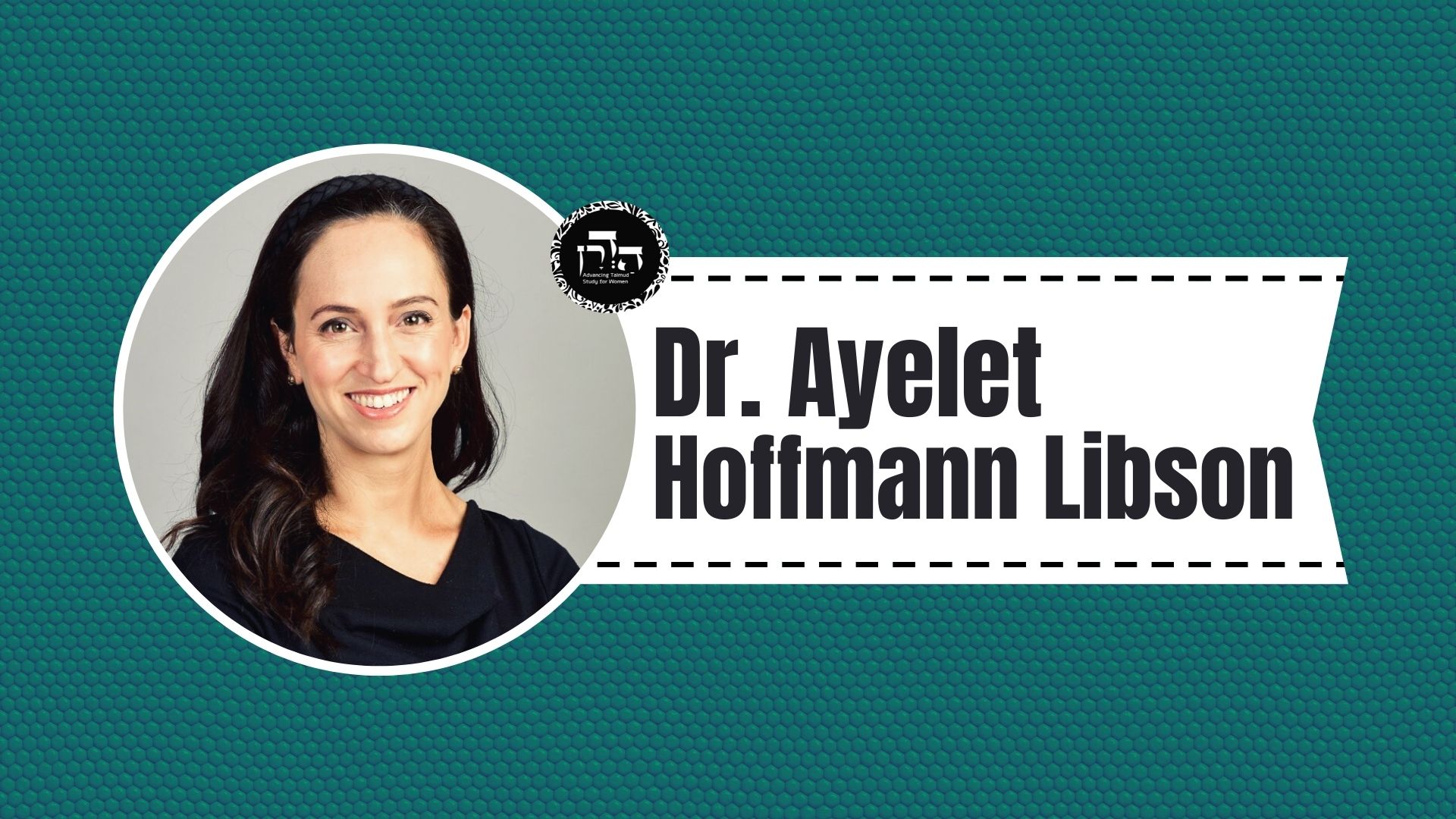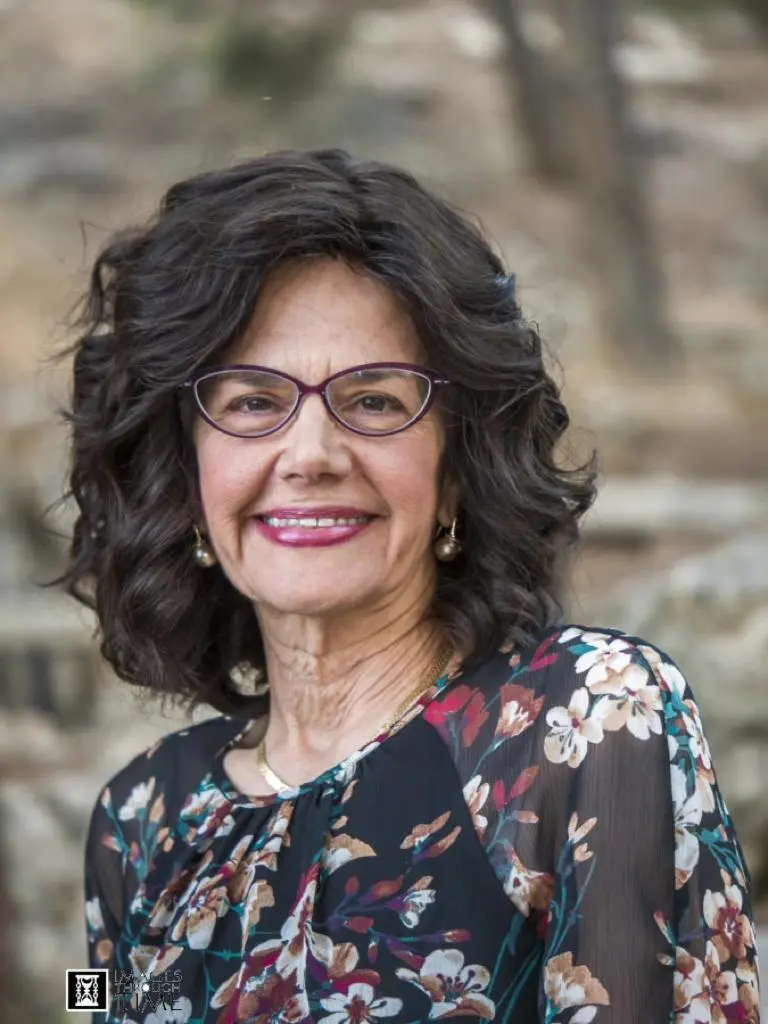Niddah 53
אָמַר רַבִּי: נִרְאִין דִּבְרֵי רַבִּי יְהוּדָה בֶּן אַגְרָא בְּשֶׁלֹּא בָּדְקָה, וְדִבְרֵי חֲכָמִים בְּשֶׁבָּדְקָה.
Rabbi Yehuda HaNasi says that the dispute between Rabbi Yehuda ben Agra and the Rabbis should be decided as follows: The statement of Rabbi Yehuda ben Agra, who maintains that there is a concern for the possibility that the woman might have seen blood at twilight, appears to be correct in a case where she did not examine. And the statement of the Rabbis, who are not concerned about that possibility, appears to be correct in a case where she did examine.
מַאי ״בָּדְקָה״, וּמַאי ״לֹא בָּדְקָה״? אֲמַר רָבָא: אַשְׁכַּחְתִּינְהוּ לְרַבָּנַן דְּבֵי רַב דְּיָתְבִי וְקָאָמְרִי — הָכָא בְמַאי עָסְקִינַן? כְּגוֹן שֶׁבָּדְקָה עַצְמָהּ, וְלֹא בָּדְקָה חֲלוּקָהּ, וְאַף עַצְמָהּ לֹא בָּדְקָה אֶלָּא בֵּין הַשְּׁמָשׁוֹת דְּרַבִּי יְהוּדָה, וּבְבֵין הַשְּׁמָשׁוֹת דְּרַבִּי יוֹסֵי לֹא בָּדְקָה.
The Gemara asks: What did Rabbi Yehuda HaNasi mean by: Where she did examine, and what did he mean by: Where she did not examine? Rava says: I found the Sages in the study hall of Rav sitting and saying the following explanation of the baraita: Here we are dealing with a case where the woman examined herself but did not examine her robe. And even with regard to herself, she examined herself only during twilight [bein hashemashot] as defined by Rabbi Yehuda, i.e., the time it takes to walk a half mil before the emergence of the stars. But during twilight as defined by Rabbi Yosei, i.e., the blink of an eye before the emergence of the stars, she did not examine herself.
דְּרַבָּנַן סָבְרִי בְּבֵין הַשְּׁמָשׁוֹת דְּרַבִּי יוֹסֵי לֵילְיָא הוּא, וְהָא בָּדְקָה בְּבֵין הַשְּׁמָשׁוֹת דְּרַבִּי יְהוּדָה, וְרַבִּי יוֹסֵי לְטַעְמֵיהּ, דְּאָמַר בֵּין הַשְּׁמָשׁוֹת סְפֵיקָא הָוֵי.
As the Rabbis hold that during the period of twilight as defined by Rabbi Yosei it is already night, and therefore it does not matter that she did not examine herself then. And as she did examine herself during the period of twilight as defined by Rabbi Yehuda, and she found no blood, there is no concern that she saw during twilight, which would count as two sightings. And Rabbi Yosei conforms to his line of reasoning, as Rabbi Yosei, in whose name Rabbi Yehuda ben Agra said his ruling, stated that the time that he defines as twilight is considered uncertain, i.e., it is not definitely night or day, and therefore there is a concern that she might have seen blood at that time, which would count as seeing twice.
וְאָמֵינָא לְהוּ אֲנָא: אִילְמָלֵי יָדֶיהָ בְּעֵינֶיהָ כׇּל בֵּין הַשְּׁמָשׁוֹת — יָפֶה אַתֶּם אוֹמְרִים, עַכְשָׁיו שֶׁמָּא עִם סִלּוּק יָדֶיהָ רָאֲתָה? וְאָמְרוּ לִי: כִּי קָאָמְרִינַן כְּשֶׁנָּתְנָה יָדֶיהָ בְּעֵינֶיהָ כׇּל בֵּין הַשְּׁמָשׁוֹת.
Rava continues: And I said to those Sages: Had the woman’s hands been in her eyes, a euphemism for her private parts, for the entire twilight period, what you say would be fine. But now that this is not the case, perhaps when she removed her hands from examining herself she saw blood. And those Sages said to me: The case about which we said that opinion was where she placed her hands in her eyes for the entire twilight period.
אָמַר רַבִּי: נִרְאִין דִּבְרֵי רַבִּי יְהוּדָה בֶּן אַגְרָא כְּשֶׁלֹּא בָּדְקָה. מַאי ״לֹא בָּדְקָה״?
The Gemara further clarifies the baraita. Rabbi Yehuda HaNasi says: The statement of Rabbi Yehuda ben Agra in the name of Rabbi Yosei, who maintains that one needs to be concerned for the possibility that the woman saw blood at twilight, which would count as though she saw blood twice, appears to be correct in a case where she did not examine. The Gemara asks: What is meant by: Where she did not examine?
אִילֵּימָא דְּבָדְקָה בִּדְרַבִּי יְהוּדָה, וְלֹא בָּדְקָה בִּדְרַבִּי יוֹסֵי, מִכְּלָל דְּרַבִּי יְהוּדָה סָבַר: אַף עַל גַּב דְּבָדְקָה בְּתַרְוַיְיהוּ חָיְישָׁא? הָא בָּדְקָה!
If we say that she examined herself during the period that is defined by Rabbi Yehuda as twilight, but she did not examine herself during the time period that is defined by Rabbi Yosei as twilight, this is difficult: If Rabbi Yehuda HaNasi accepted the opinion of Rabbi Yehuda ben Agra only in such a case, this indicates, by inference, that Rabbi Yehuda ben Agra himself, whose ruling is more strict than that of the Rabbis, holds that even though she examined herself during the twilight period as defined by both Rabbi Yehuda and Rabbi Yosei, she must be concerned. This conclusion is untenable, as she examined herself throughout twilight and there was no blood.
אֶלָּא פְּשִׁיטָא דְּלֹא בָּדְקָה, לָא בִּדְרַבִּי יְהוּדָה וְלָא בִּדְרַבִּי יוֹסֵי, אֲבָל בָּדְקָה בִּדְרַבִּי יְהוּדָה וְלֹא בָּדְקָה בִּדְרַבִּי יוֹסֵי — לָא חָיְישָׁא.
Rather, it is obvious that when Rabbi Yehuda HaNasi referred to a case where she did not examine herself, he meant that she examined herself neither during the period that Rabbi Yehuda defines as twilight, nor during the period that Rabbi Yosei defines as twilight. But if she examined herself during the period that Rabbi Yehuda defines as twilight, but she did not examine herself during the period that Rabbi Yosei defines as twilight, then she does not need to be concerned.
אַלְמָא, בֵּין הַשְּׁמָשׁוֹת דְּרַבִּי יוֹסֵי לְרַבִּי לֵילְיָא הוּא. אֵימָא סֵיפָא: ״וְדִבְרֵי חֲכָמִים כְּשֶׁבָּדְקָה״. מַאי ״בָּדְקָה״?
Evidently, the time period that Rabbi Yosei defines as twilight is considered nighttime according to Rabbi Yehuda HaNasi. But if so, say the latter clause: And the statement of the Rabbis appears to be correct in a case where she did examine. What is meant by: Where she did examine?
אִילֵּימָא דְּבָדְקָה בִּדְרַבִּי יְהוּדָה, וְלֹא בָּדְקָה בִּדְרַבִּי יוֹסֵי, מִכְּלָל דְּרַבָּנַן סָבְרִי אַף עַל גַּב דְּלֹא בָּדְקָה בְּתַרְוַיְיהוּ — לָא חָיְישִׁינַן, הָא לֹא בָּדְקָה!
If we say that she examined herself during the period that is defined by Rabbi Yehuda as twilight, but she did not examine herself during the period that is defined by Rabbi Yosei as twilight, this is difficult: If Rabbi Yehuda HaNasi accepted the opinion of the Rabbis only in such a case, this indicates by inference that the Rabbis themselves hold that even though she did not examine herself during the twilight period as defined by both Rabbi Yehuda and Rabbi Yosei, nevertheless, we are not concerned. But in such a case, she did not examine herself at twilight at all.
אֶלָּא פְּשִׁיטָא דְּבָדְקָה בֵּין בִּדְרַבִּי יְהוּדָה, וּבֵין בִּדְרַבִּי יוֹסֵי, אֲבָל בָּדְקָה בִּדְרַבִּי יְהוּדָה וְלֹא בָּדְקָה בִּדְרַבִּי יוֹסֵי — חָיְישִׁינַן.
Rather, it is obvious that she examined herself both during the period that Rabbi Yehuda defines as twilight, and during the period that Rabbi Yosei defines as twilight. But if she examined herself during the period that Rabbi Yehuda defines as twilight, and she did not examine herself during the period that Rabbi Yosei defines as twilight, then we are concerned.
אַלְמָא, בֵּין הַשְּׁמָשׁוֹת דְּרַבִּי יוֹסֵי לְרַבִּי סְפֵקָא הָוֵי, קַשְׁיָא דְּרַבִּי אַדְּרַבִּי!
Evidently, the time period that Rabbi Yosei defines as twilight is considered to be of uncertain status regarding whether it is day or night according to Rabbi Yehuda HaNasi. The Gemara asks: If so, one statement of Rabbi Yehuda HaNasi poses a difficulty for another statement of Rabbi Yehuda HaNasi, as the inferences from the two parts of Rabbi Yehuda HaNasi’s observation contradict one another.
הָכִי קָאָמַר: נִרְאִין דִּבְרֵי רַבִּי יְהוּדָה בֶּן אַגְרָא לְרַבָּנַן, דְּלָא בָּדְקָה כְּלָל — לֹא בִּדְרַבִּי יְהוּדָה וְלֹא בִּדְרַבִּי יוֹסֵי, שֶׁאַף חֲכָמִים לֹא נֶחְלְקוּ עָלָיו אֶלָּא דְּבָדְקָה בִּדְרַבִּי יְהוּדָה וְלֹא בָּדְקָה בִּדְרַבִּי יוֹסֵי. אֲבָל הֵיכָא דְּלֹא בָּדְקָה כְּלָל — מוֹדוּ לֵיהּ.
The Gemara explains that this is what Rabbi Yehuda HaNasi is saying: The statement of Rabbi Yehuda ben Agra appears correct to the Rabbis in a case where she did not examine herself at all, neither during the period that Rabbi Yehuda defines as twilight, nor during the period that Rabbi Yosei defines as twilight. As, even the Rabbis disagree with Rabbi Yehuda ben Agra only in a case where she examined herself during the period that Rabbi Yehuda defines as twilight but she did not examine herself during the time period that Rabbi Yosei defines as twilight. But in a case where she did not examine herself at all, they concede to him that we are concerned that she might have emitted blood at twilight.
וּרְמִינְהוּ: הָרוֹאָה כֶּתֶם, לִרְאִיָּה מְרוּבָּה — חוֹשֶׁשֶׁת, לִרְאִיָּה מוּעֶטֶת — אֵינָהּ חוֹשֶׁשֶׁת. זוֹ דִּבְרֵי רַבִּי יְהוּדָה בֶּן אַגְרָא שֶׁאָמַר מִשּׁוּם רַבִּי יוֹסֵי.
And the Gemara raises a contradiction from a baraita: In the case of a woman who sees a red stain, if she saw a large stain, covering an area the size of at least three split beans, she must be concerned that she might be a zava. But if she saw a small stain, covering an area of less than the size of three split beans, she does not need to be concerned that she is a zava. This is the statement of Rabbi Yehuda ben Agra, who said it in the name of Rabbi Yosei.
אָמַר רַבִּי: אֲנִי שָׁמַעְתִּי מִמֶּנּוּ שֶׁאַחַת זוֹ וְאַחַת זוֹ חוֹשֶׁשֶׁת, וּמִן הַטַּעַם הַזֶּה אָמַר לִי: וּמָה אִילּוּ נִדָּה שֶׁלֹּא הִפְרִישָׁה בְּטָהֳרָה מִן הַמִּנְחָה וּלְמַעְלָה — לֹא תְּהֵא בְּחֶזְקַת טְמֵאָה? וְנִרְאִין דְּבָרָיו כְּשֶׁבָּדְקָה.
Rabbi Yehuda HaNasi said: I heard from Rabbi Yosei that with regard to both this one and that one, i.e., whether it is a large or small stain, she must be concerned that she is a zava. And Rabbi Yosei said this halakha to me based on this reasoning: And what would be the case if a menstruating woman did not perform the examination marking the first step in her transition from ritual impurity to ritual purity on the seventh day from minḥa time onward? Would she not have a presumptive status of ritual impurity? Rabbi Yehuda HaNasi added: And Rabbi Yosei’s statement appears to be correct with regard to the case where she examined.
מַאי בָּדְקָה? אִילֵּימָא דְּבָדְקָה בִּדְרַבִּי יְהוּדָה, וְלֹא בָּדְקָה בִּדְרַבִּי יוֹסֵי, מִכְּלָל דְּרַבִּי יְהוּדָה בֶּן אַגְרָא סָבַר אַף עַל גַּב דְּלֹא בָּדְקָה לָא בִּדְרַבִּי יְהוּדָה וְלָא בִּדְרַבִּי יוֹסֵי — לָא חָיְישָׁא? וְהָא לֹא בָּדְקָה!
Once again, the Gemara asks: What is meant by the term: Where she examined? If we say that she examined herself during the period that is defined by Rabbi Yehuda as twilight, but she did not examine herself during the period that is defined by Rabbi Yosei as twilight, this indicates by inference that Rabbi Yehuda ben Agra, who disagrees in the second baraita with this version of Rabbi Yosei’s opinion and rules more leniently, holds that even though she did not examine herself during the twilight period as defined by both Rabbi Yehuda and Rabbi Yosei, nevertheless, she does not need to be concerned that she is a zava. But this conclusion is untenable, as she did not examine herself at twilight at all.
אֶלָּא פְּשִׁיטָא דְּבָדְקָה בֵּין בִּדְרַבִּי יְהוּדָה וּבֵין בִּדְרַבִּי יוֹסֵי, מִכְּלָל דְּרַבִּי יְהוּדָה בֶּן אַגְרָא סָבַר: בָּדְקָה בִּדְרַבִּי יְהוּדָה וְלֹא בָּדְקָה בִּדְרַבִּי יוֹסֵי — לָא חָיְישָׁא.
Rather, it is obvious that Rabbi Yehuda HaNasi is referring to a case where she examined herself both during the period that Rabbi Yehuda defines as twilight and during the period that Rabbi Yosei defines as twilight. This indicates, by inference, that Rabbi Yehuda ben Agra holds that if she examined herself during the period that Rabbi Yehuda defines as twilight, but she did not examine herself during the time period that Rabbi Yosei defines as twilight, then she does not need to be concerned, as a sighting at that time would not count as two.
אַלְמָא, בֵּין הַשְּׁמָשׁוֹת דְּרַבִּי יוֹסֵי לְרַבִּי יְהוּדָה בֶּן אַגְרָא — לֵילְיָא הוּא. קַשְׁיָא דְּרַבִּי יְהוּדָה בֶּן אַגְרָא אַדְּרַבִּי יְהוּדָה בֶּן אַגְרָא!
Evidently, the period that Rabbi Yosei defines as twilight is considered to be nighttime according to Rabbi Yehuda ben Agra. If so, one statement of Rabbi Yehuda ben Agra poses a difficulty with regard to another statement of Rabbi Yehuda ben Agra, as earlier it was stated that according to Rabbi Yehuda ben Agra twilight is not definitely night.
בִּשְׁלָמָא בְּלֹא רַבִּי — לָא קַשְׁיָא: הָתָם דְּבָדְקָה בִּדְרַבִּי יְהוּדָה וְלֹא בָּדְקָה בִּדְרַבִּי יוֹסֵי, הָכָא דְּבָדְקָה נָמֵי בִּדְרַבִּי יְהוּדָה וּבִדְרַבִּי יוֹסֵי, אֶלָּא בִּדְרַבִּי קַשְׁיָא!
Granted, without the statement of Rabbi Yehuda HaNasi, the apparent contradiction between these statements of Rabbi Yehuda ben Agra in the two baraitot is not difficult, as one could explain as follows: There, with regard to the first baraita, it is referring to a case where she examined herself during the period that is defined by Rabbi Yehuda as twilight, but she did not examine herself during the period that is defined by Rabbi Yosei as twilight. By contrast, here it is referring to a case where she examined herself both during the period that is defined by Rabbi Yehuda as twilight and during the period that is defined by Rabbi Yosei as twilight. But in light of the statement of Rabbi Yehuda HaNasi, one cannot explain in this manner, and therefore the contradiction poses a difficulty.
תְּרֵי תַּנָּאֵי וְאַלִּיבָּא דְּרַבִּי יְהוּדָה בֶּן אַגְרָא: הַאי תַּנָּא סָבַר, שָׁלֵים בֵּין הַשְּׁמָשׁוֹת דְּרַבִּי יְהוּדָה,
The Gemara answers: This is not a contradiction, as there are two tanna’im and they disagree with regard to the opinion of Rabbi Yehuda ben Agra. This tanna holds that Rabbi Yehuda’s twilight ends,
וַהֲדַר חָיֵיל בֵּין הַשְּׁמָשׁוֹת דְּרַבִּי יוֹסֵי, וְהַאי תַּנָּא סָבַר, בֵּין הַשְּׁמָשׁוֹת דְּרַבִּי יוֹסֵי מֵישָׁךְ שָׁיֵיךְ בִּדְרַבִּי יְהוּדָה.
and only thereafter the twilight of Rabbi Yosei begins, when there is uncertainty, and there is a concern that perhaps she saw blood at that time. And that tanna of the second baraita holds that the twilight of Rabbi Yosei is subsumed within and occurs at the end of the twilight of Rabbi Yehuda. According to the opinion of this tanna, since she examined herself throughout the twilight of Rabbi Yehuda, she also necessarily examined herself throughout the twilight of Rabbi Yosei and therefore there is no need to be concerned about her status.
תָּנוּ רַבָּנַן: הָרוֹאָה כֶּתֶם — מְטַמְּאָה עַצְמָהּ וְקָדָשִׁים לְמַפְרֵעַ, דִּבְרֵי רַבִּי.
§ On the topic of a woman seeing a stain, the Sages taught in a baraita: A woman who sees a red stain on her garment renders herself and consecrated items that she touched impure retroactively, from the time when that garment was last laundered. This is the statement of Rabbi Yehuda HaNasi.
רַבִּי שִׁמְעוֹן בֶּן אֶלְעָזָר אוֹמֵר: קָדָשִׁים — מְטַמְּאָה, עַצְמָהּ — אֵינָהּ מְטַמְּאָה, שֶׁלֹּא יְהֵא כִּתְמָהּ חָמוּר מֵרְאִיָּיתָהּ.
Rabbi Shimon ben Elazar says: She does render consecrated items that she touched impure retroactively, but she does not render herself impure with regard to rendering impure objects that she touched since the time the garment was last laundered. The reason is that her stain should not be more stringent than her actual seeing of blood. If she experiences bleeding, she renders impure only objects that she touched during the previous twenty-four-hour period.
וְהָא מָצִינוּ, כִּתְמָהּ חָמוּר מֵרְאִיָּיתָהּ לְעִנְיַן קָדָשִׁים!
The Gemara asks: But don’t we find that Rabbi Shimon ben Elazar himself holds that her stain is more stringent than her actual seeing of blood with regard to consecrated items? Her stain renders such items impure retroactively from the time that the garment was laundered, whereas her actually seeing blood renders impure only those items that she touched during the past twenty-four-hour period.
אֶלָּא תָּנֵי הָכִי: רַבִּי שִׁמְעוֹן בֶּן אֶלְעָזָר אוֹמֵר: אַף קָדָשִׁים אֵינָהּ מְטַמְּאָה, שֶׁלֹּא יְהֵא כִּתְמָהּ חָמוּר מֵרְאִיָּיתָהּ לְכׇל דָּבָר.
The Gemara answers: Rather, teach the baraita like this: Rabbi Shimon ben Elazar says that she does not even render consecrated items that she touched impure retroactively from the time that the garment was laundered, but only those items that she touched during the past twenty-four-hour period. The reason is that her stain should not be more stringent than her actual seeing of blood with regard to any matter.
תָּנוּ רַבָּנַן: רָאֲתָה כֶּתֶם, וְאַחַר כָּךְ רָאֲתָה דָּם — תּוֹלָה כִּתְמָהּ בִּרְאִיָּיתָהּ מֵעֵת לְעֵת, דִּבְרֵי רַבִּי.
§ The Sages taught in a baraita: In the case of a woman who saw a red stain on her garment, and afterward saw blood, what is the halakha? She attributes her stain to her seeing blood, i.e., the stain is treated as part of the seeing of blood, which means that she is impure only from when she found the stain, as it assumed that it appeared no earlier. This is the halakha provided that she saw the blood within a twenty-four-hour period of her discovery of the stain. But if more than twenty-four hours passed, she cannot attribute the stain to her sighting. This is the statement of Rabbi Yehuda HaNasi.
רַבִּי שִׁמְעוֹן בֶּן אֶלְעָזָר אוֹמֵר: יוֹמוֹ. אָמַר רַבִּי: נִרְאִין דְּבָרָיו מִדְּבָרַי, שֶׁהוּא — מְתַקְּנָהּ, וַאֲנִי — מְעַוְּותָהּ.
Rabbi Shimon ben Elazar says: She may attribute the stain to the sighting only if she experienced bleeding on the day of discovering the stain. If she experienced bleeding after that day, even if it was within twenty-four hours, she may not attribute the stain to the sighting, which means that she is impure retroactively from when she found the stain, in case it appeared earlier. Rabbi Yehuda HaNasi said: The statement of Rabbi Shimon ben Elazar appears to be more correct than mine, as he fixes her situation, i.e., he is lenient, and I ruin her situation, as my ruling is stringent. Since the impurity of a stain applies by rabbinic law, one should follow the more lenient opinion.
מְתַקְּנָהּ? עַוּוֹתֵי מְעַוֵּית לַהּ! אָמַר רָבִינָא: אֵיפוֹךְ.
The Gemara asks: But does Rabbi Shimon ben Elazar actually fix her situation? Does he not ruin her situation? If she experiences bleeding the day after she found the stain, but within twenty-four hours of finding the stain, according to Rabbi Shimon ben Elazar she renders items impure retroactively. By contrast, according to Rabbi Yehuda HaNasi she renders objects impure only from when she discovered the stain. Ravina says: Reverse Rabbi Yehuda HaNasi’s statement, so that it states: My statement appears to be more correct than that of Rabbi Shimon ben Elazar, as I fix her situation and he ruins her situation.
רַב נַחְמָן אָמַר: לְעוֹלָם לָא תֵּיפוֹךְ, שֶׁהוּא מְתַקֵּן הִלְכוֹתֶיהָ לִידֵי זִיבָה,
Rav Naḥman says: Actually, do not reverse Rabbi Yehuda HaNasi’s statement, as Rabbi Yehuda HaNasi meant the following: Rabbi Shimon ben Elazar’s opinion appears to be more correct, as he fixes her halakhot with regard to ziva. If she experiences bleeding on the day after discovering the stain, the count of her seven days of menstrual flow begins on that day of her actual sighting, not from when she saw the stain. This is due to the fact that the stain is not attributable to the seeing of the blood. Therefore, if she experiences bleeding on the seventh day after first experiencing bleeding, which is the eighth day after discovering the stain, she is not considered a lesser zava, and she can be purified from her status as a menstruating woman.
וַאֲנִי מְעַוֵּות הִלְכוֹתֶיהָ לִידֵי זִיבָה.
But I, Rabbi Yehuda HaNasi, ruin her halakhot with regard to ziva. Since the stain is attributable to the seeing of the blood within twenty-four hours, her counting starts from when she found the stain, and therefore the blood that she sees on the eighth day after discovering the stain is considered ziva. Consequently, she is considered a lesser zava and must observe a clean day for each day she experiences a discharge.
בָּעֵי מִינֵּיהּ רַבִּי זֵירָא מֵרַבִּי אַסִּי: כְּתָמִים צְרִיכִין הֶפְסֵק טׇהֳרָה אוֹ לָא? אִשְׁתִּיק, וְלָא אֲמַר לֵיהּ וְלָא מִידֵי.
§ Rabbi Zeira asked Rabbi Asi: Are stains like the actual sight of blood, in that they require an examination in which she is clean of blood, marking the first step in her transition from impurity to purity before immersion on the night following the seventh day, or not? Rabbi Asi was silent and said nothing to Rabbi Zeira.
זִימְנִין אַשְׁכְּחֵיהּ דְּיָתֵיב וְקָאָמַר: תּוֹלָה כִּתְמָהּ בִּרְאִיָּיתָהּ מֵעֵת לְעֵת, דִּבְרֵי רַבִּי.
The Gemara relates that on another occasion Rabbi Zeira found Rabbi Asi sitting and saying that a woman who sees a stain and afterward experiences bleeding attributes her stain to her seeing blood, if she saw the blood within a twenty-four-hour period of when she discovered the stain. This is the statement of Rabbi Yehuda HaNasi.
אָמַר רֵישׁ לָקִישׁ: וְהוּא שֶׁבָּדְקָה, וְרַבִּי יוֹחָנָן אָמַר: אַף עַל פִּי שֶׁלֹּא בָּדְקָה.
Rabbi Asi added that there is a dispute with regard to the details of this halakha. Reish Lakish says: This applies only in a case where she examined herself at the end of the seventh day from the discovery of the stain. This examination indicates that the stain is related to her experiencing bleeding, and therefore the standard halakha of a woman who becomes pure at the end of her seven menstrual days applies to her. By contrast, if she examined herself only at the end of the eighth day, the stain is not attributable to her bleeding. And Rabbi Yoḥanan says: The stain is attributable to her bleeding under all circumstances, even if she did not examine herself until the eighth day.
אֲמַר לֵיהּ: מִכְּלָל דִּכְתָמִים צְרִיכִין (הפסקת) [הֶפְסֵק] טׇהֳרָה? אֲמַר לֵיהּ: אִין. וְהָא זִימְנִין סַגִּיאִין (בעא) [בְּעַאי] מִינָּךְ, וְלָא אֲמַרְתְּ וְלָא מִידֵּי, דִּלְמָא אַגַּב שִׁיטְפָךְ אָתְיָא לָךְ? אֲמַר לֵיהּ: אִין, אַגַּב שִׁיטְפַאי אָתְיָא לִי.
Upon hearing this, Rabbi Zeira said to Rabbi Asi: Does that mean, by inference, that stains require an examination marking the first step in her transition from impurity to purity? Rabbi Asi said to Rabbi Zeira: Yes, that is the halakha. Rabbi Zeira further said to Rabbi Asi: But on many occasions I asked you about this matter and you did not say anything to me. Perhaps in the course of your studies this halakha came back to you? Rabbi Asi said to him: Yes, in the course of my studies this halakha came back to me.
מַתְנִי’ הָרוֹאָה יוֹם אַחַד עָשָׂר בֵּין הַשְּׁמָשׁוֹת — תְּחִלַּת נִדָּה וְסוֹף נִדָּה, תְּחִלַּת זִיבָה וְסוֹף זִיבָה.
MISHNA: In the case of a woman who sees an emission of blood during twilight on the eleventh day of the days in which she can assume the status of a zava, as there is uncertainty whether the emission was during the day and it is the flow of a zava or whether it was at night and it is menstrual flow, she observes seven days of impurity like the beginning of the seven days of menstruation and the end of menstruation. If she experienced an emission on the two previous days as well, she observes seven clean days before immersion like the beginning of the flow of ziva and the end of the flow of ziva.
יוֹם אַרְבָּעִים לַזָּכָר, וְיוֹם שְׁמוֹנִים לַנְּקֵבָה, בֵּין הַשְּׁמָשׁוֹת לְכוּלָּן — הֲרֵי אֵלּוּ טוֹעוֹת.
Similarly, in the case of a woman who experiences an emission of blood during twilight on the fortieth day after the birth of a male or the eightieth day after the birth of a female, there is uncertainty whether it is considered daytime and therefore part of the final day of the blood of purity, or night that is part of the following day when the blood is impure. With regard to experiencing bleeding during twilight in all those cases, these women are mistaken in their calculation of the days of menstrual flow and the flow of a zava. Consequently, if they experience bleeding for three consecutive days at the beginning or at the end of the eleven days of ziva, they bring the offering of a zava but it is not eaten, as it was brought based on uncertainty.
אָמַר רַבִּי יְהוֹשֻׁעַ: עַד שֶׁאַתֶּם מְתַקְּנִים אֶת הַשּׁוֹטוֹת, בֹּאוּ וְתַקְּנוּ אֶת הַפִּקְּחוֹת.
Rabbi Yehoshua said: Instead of making provisions to remedy the uncertainties of the misguided, come and remedy the uncertainties of the competent women who know what day they saw the blood but require guidance, due to the multitude of emissions that they experienced.
גְּמָ’ תְּחִלַּת נִדָּה וְסוֹף נִדָּה? תְּחִלַּת נִדָּה וְסוֹף זִיבָה הִיא!
GEMARA: The mishna teaches that if a woman experiences bleeding during twilight on the eleventh day of the days on which she can assume the status of a zava, the flow is considered to be the beginning of the seven days of menstruation and the end of menstruation. The Gemara raises a difficulty: But the concern is only that this flow might be either the beginning of the seven days of menstruation, if twilight is treated as night, or the end of ziva, if twilight is treated as day.
אָמַר רַב חִסְדָּא: הָכִי קָאָמַר — הָרוֹאָה יוֹם אַחַד עָשָׂר בֵּין הַשְּׁמָשׁוֹת, תְּחִילַּת נִדָּה וְסוֹף זִיבָה.
Rav Ḥisda says that this is what the mishna is saying: A woman who sees an emission of blood during twilight on the eleventh day of the days on which she can assume the status of a zava must be concerned both for the possibility that it is the beginning of the seven days of menstruation and for the possibility that it is the end of the flow of ziva. If she had also seen an emission on the two previous days, she observes seven clean days before immersion, due to uncertainty.
וּבַשְּׁבִיעִי לְנִדָּתָהּ — סוֹף נִדָּה וּתְחִלַּת זִיבָה.
With regard to the continuation of the mishna, which states: The beginning of the flow of ziva and the end of the flow of ziva, this should be understood as follows: And in the case of a woman who experiences an emission of blood during twilight on the seventh day of the seven days of the flow of her menstruation, she must be concerned both for the possibility that it is the end of the seven days of menstruation and for the possibility that it is the beginning of the flow of ziva.
אָמַר רַבִּי יְהוֹשֻׁעַ: עַד שֶׁאַתֶּם מְתַקְּנִין אֶת הַשּׁוֹטוֹת כּוּ׳. הָנֵי
§ The mishna teaches that Rabbi Yehoshua said to the Rabbis: Instead of making provisions to remedy the uncertainties of the misguided, come and remedy the uncertainties of the competent women. The Gemara asks: Are these women who experience bleeding during twilight























